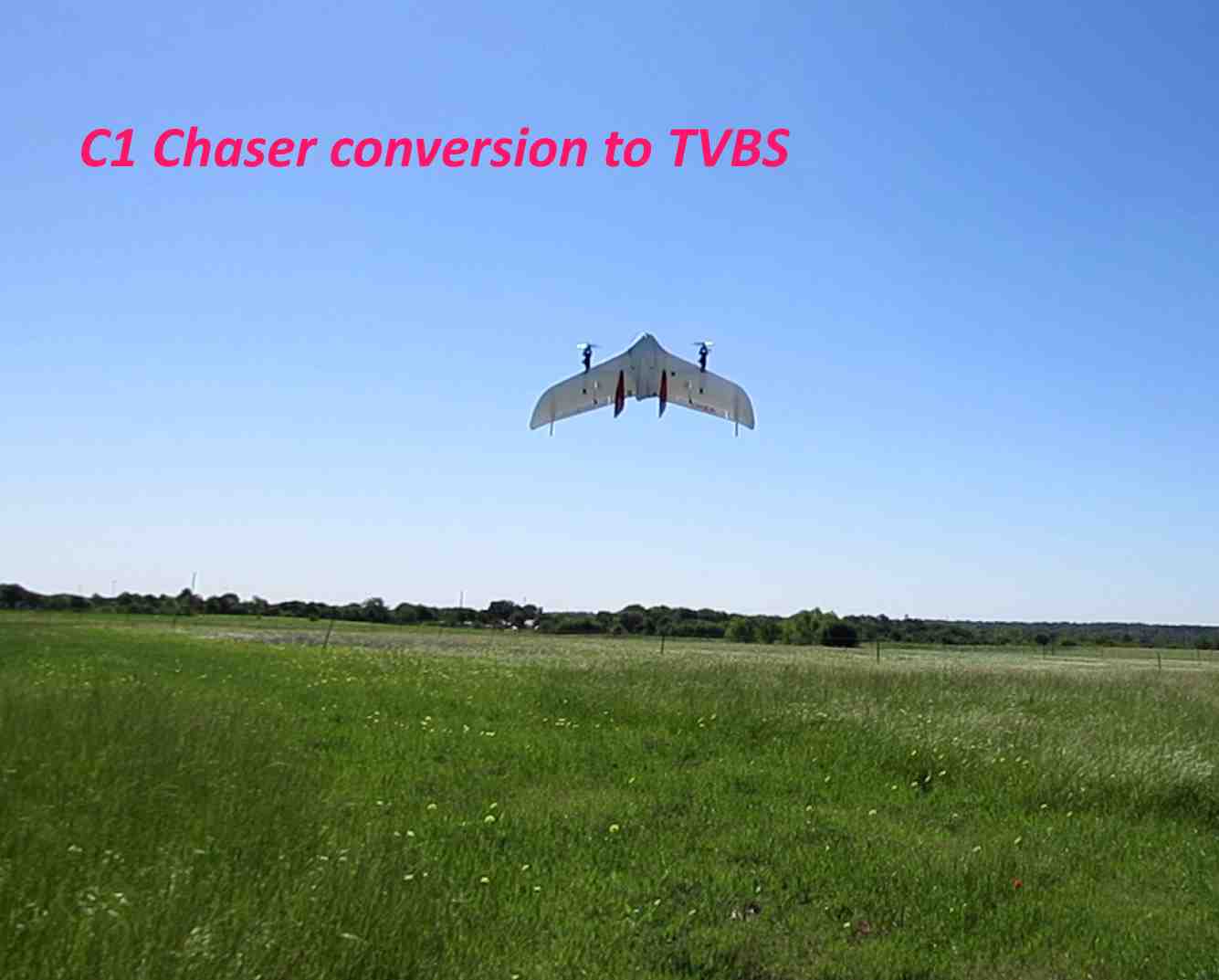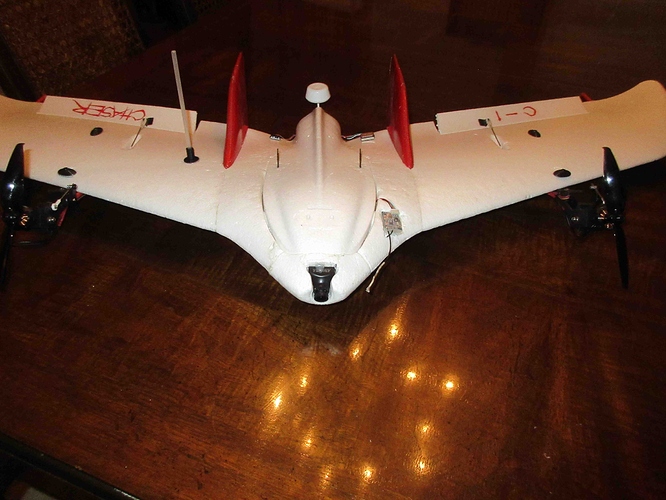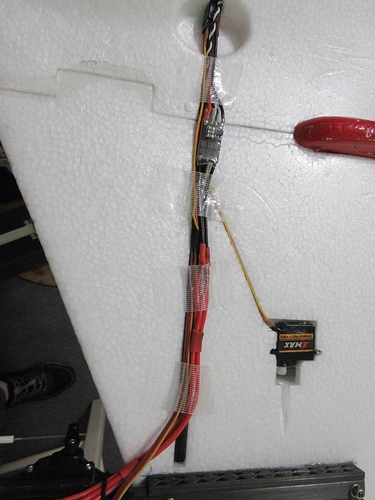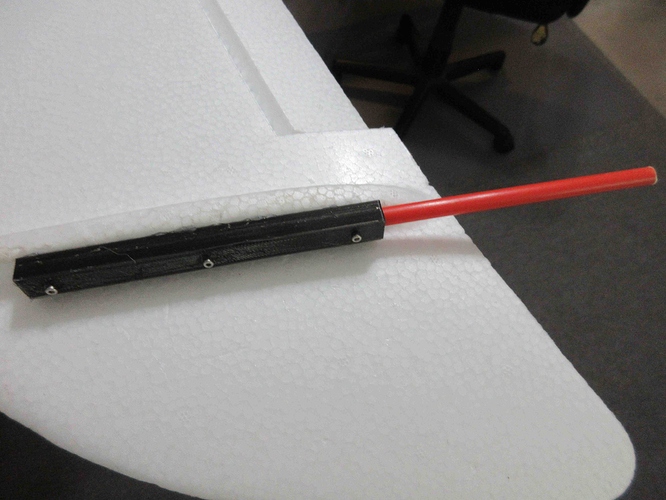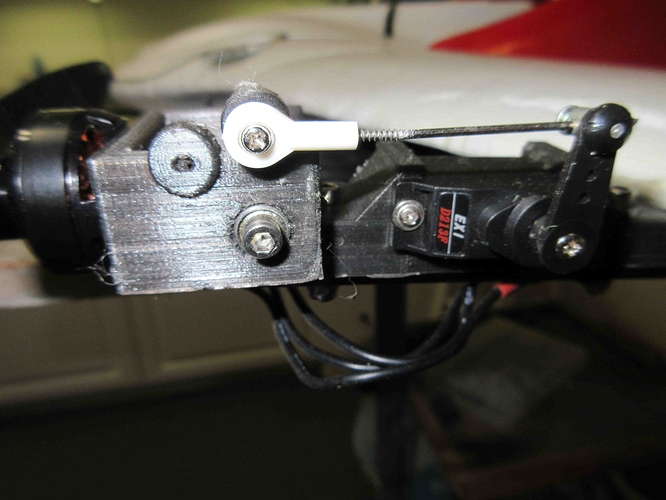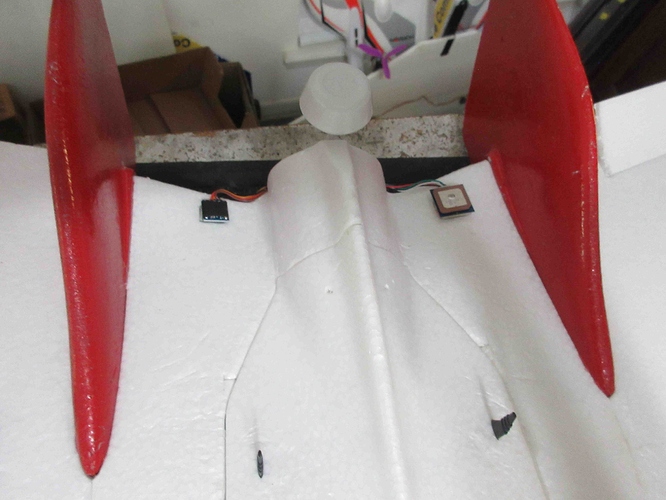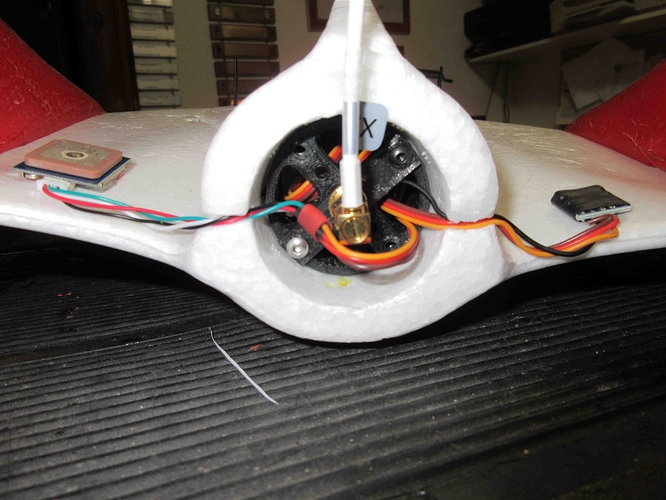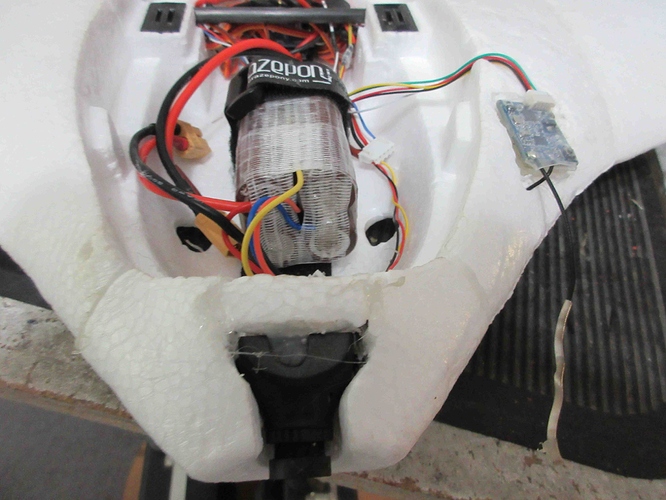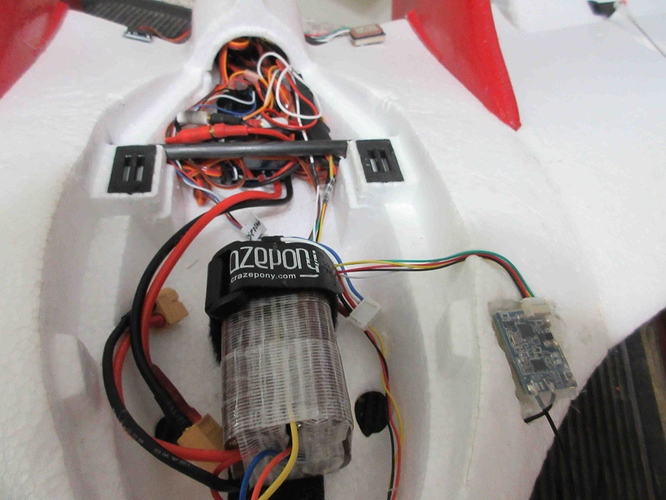This details the conversion of my existing C1 Chaser flying wing to an ArduPlane TVBS (Twin motor Vectored Belly Sitter). A tailsitter which lands on its belly instead of its tail.
Starting from a flying C1 Chaser, you will need the following:
- Two 5" mini-quad style motors. I used the Cobra 2204/2300Kv motors.
- Two 18A ESCs. I used ZTW Spiders running standard PWM.
- Two Gemfan 6x3 Props. These have a lot better effeciency than many others.
- 3D printed tilt rotor motor mounts. These can be used on normal Tilt rotor or Vectored Tailsitters (either +/-45 deg or 0-90deg). I use these on my Tricopter Tilt Rotor MiniTalon with much more powerful motors:
-
STL files: Tilt Motor Mount by ATXHELI - Thingiverse
-
10mmx10mm carbon tube (https://alofthobbies.com/carbon-fiber-tubes.html)
-
2, 693ZZ 3 x 8 x 4 mm ball bearings (Amazon.com)
-
2, 3mmx8 screws for the pivots
-
4, 3mm bolts for the motors
-
method to couple the tilt servos to tilt mount. I prefer ball links, especially on my MiniTalon, but on this lighter plane, I just use one ball link and a Dubro quick link on the servo arm.
-
2, EMAX ES-09MD dual ball bearing micro digital servos
-
4, 3mm x 45mm bolts for wing mounts
-
4, 3mm x 20mm bolts for tilt mounts
-
8, 3mm washers
-
- GPS and Compass. I used a BN-220 micro GPS (see notes regarding operation with EKF3 below) and a GY-271 discrete compass IC breakout board (https://www.amazon.com/gp/product/B008V9S64E)
- A flight controller capable of running ArduPlane 4.0 or later with 6 servo/motor outputs and GPS/compass. I used a MXK, MatekF405-Wing clone just because I had it laying around. I had gotten it since it has integrated BT module on SERIAL1, but, unfortunately it has custom firmware that prevents it from connecting with a ArduPilot GCS (was targeted for iNav and SpeedyBee Android app)
- 4S Battery Pack. I used 4, IMREN 18650 3000MAH 20A/40A LiIon batteries with 20A continuous current rating. But a 4s Lipo pack of ~180g -200g total weight will balance the same…it can take heavier. Now it cruises at 3-5A.
The conversion is very straightforward.
- Remove the pusher motor and ESC. I mounted my FPV video transmitter in the tail area vacated.
- Assemble and mount the twin tilt motors on the wings approximately 205mm from the balancing dots under the wing. Carbon tubes were 200mm long. Use washers and do not overtighten.
- Mount the GPS and compass in the rear. Knowing that I might want to add an HD camera at some point, I tried to keep as much weight rearward as I could since I was replace the rear motor with two motors forward of the CG.
- Connect and setup the FC.
Flight Controller setup and calibration instructions (beyond following the wiki for Quadplane and then vectored tailsitters):
- I set the “level” point of the plane for about 3 degs of angle of attack of the wing chord line. This is a nice sedate cruise attitude.
- I then corrected this for VTOL modes by setting Q_TRIM_PITCH to -3 deg, lest it drift backward when nose up hovering. Both 1 and #2 are items I usually tweak in the first flights.
- Be sure to get the motor direction and assignments correct, as well as the tilt servos directions. This can be checked by changing mode from QSTABILIZE to FBWA and back in horizontal flight attitude. Motor direction can be checked in the Mission Planner Motor screen.
- I find that LIM_ROLL_CD of 4500 is too lethargic…I use 5500.
- I find that Q_TAILSIT_ANGLE of 60 vs 45, and Q_TRANSITION_MS = 6000, is a smoother transition.
- I like Q_LOIT_ANGLE_MAX of at least 30 and Q_ANGLE_MAX of at least 4500 are needed to be able to fight even light (<10mph) wind in STABLIZE and LOITER modes. Of course, even with these values, moderate to heavy wind is always an issue for a Tailsitter.
- Since I am using a micro GPS, if using EKF3, it may take a while(>10min) to have pre-arm AHRS consistency checks pass. I worked around this by upping the EKF3_CHECK_SCALE to 120 from 100 (not recommended for Copters!). And there is a change pending to “latest” firmwares for plane (only) to set it to 150 like EKF2 is in plane. Or you can use a bigger GPS or aluminum foil backplane enlargement under the GPS (Careful not to short electronics!).
One final note: first takeoff to VTOL upright, don’t be bashful about moving the throttle quickly to mid-stick (actually a bit above, ~65% ). Otherwise, it will scoot across the ground until there is enough vertical thrust component at 45 deg motor angle to rotate the plane. Faster is better!
